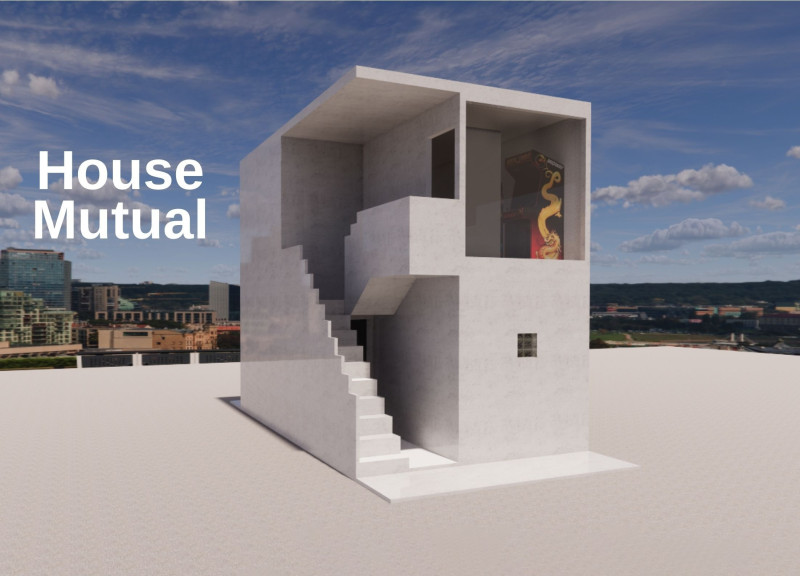5 key facts about this project
This project serves multiple functions, acting as a space for [insert primary function, e.g., residential living, community gathering, commercial activity, etc.]. The strategic planning of interior layouts ensures that the space is adaptable, catering to varying activities and promoting fluid movement within its confines. The design supports diverse uses, thereby fostering a vibrant atmosphere that encourages socialization and further entrenches the building within its community.
A key aspect of the architecture is its careful material selection, which reflects both sustainability and an appreciation for the environment. The use of concrete provides structural robustness while allowing for a modern visual language. Glass elements enhance this aesthetic by introducing transparency and inviting natural light into the interior spaces, creating an inviting and warm atmosphere for occupants. Steel serves as a vital component of the framework, introducing a sleek, industrial feel and allowing for expansive interior spaces. Natural materials, such as locally sourced wood, add organic textures that soften the rigid appearance of concrete and steel, promoting a welcoming environment. The incorporation of stone further roots the structure within its context, reflecting the geological characteristics of the area and symbolizing stability and permanence.
The design intricately addresses aspects of sustainability through various strategies that minimize the building's environmental impact. Rainwater harvesting systems and green roofs illustrate a commitment to ecological principles, enhancing biodiversity and reducing urban heat effects. The careful orientation of the structure maximizes energy efficiency, optimizing natural light while reducing reliance on artificial illumination. This attention to sustainability not only aligns with contemporary architectural trends but also establishes the project as a responsible model for future developments within the area.
Unique design approaches are evident throughout this project. The architects have employed innovative techniques to create dynamic spatial experiences. For instance, the interplay of open and semi-enclosed areas fosters a sense of privacy while encouraging communal gatherings. Large terraces and outdoor spaces blur the lines between interior and exterior, enhancing usability and promoting a lifestyle that embraces nature. Thoughtful landscaping complements the architectural form, integrating greenery that contributes to the aesthetic appeal while providing ecological benefits.
Moreover, the building's façade reflects a balance between visual impact and contextual integration. The use of varied materials and textures creates a rhythm that engages viewers, inviting them to explore the building more closely. While achieving a modern appearance, the design also resonates with the historical and cultural aspects of the surrounding community, ensuring that it does not disrupt but rather complements the existing urban fabric.
Overall, this architectural project symbolizes a forward-thinking approach, merging contemporary design principles with a sensitivity to its environment and community. It stands not merely as a structure but as a vibrant part of its neighborhood, promoting interaction, sustainability, and a connection to place. Readers interested in gaining deeper insights into the architectural plans, sections, designs, and ideas associated with this project are encouraged to explore further. This exploration will enhance understanding of how thoughtful architecture can positively influence both individual experiences and broader community dynamics.


























